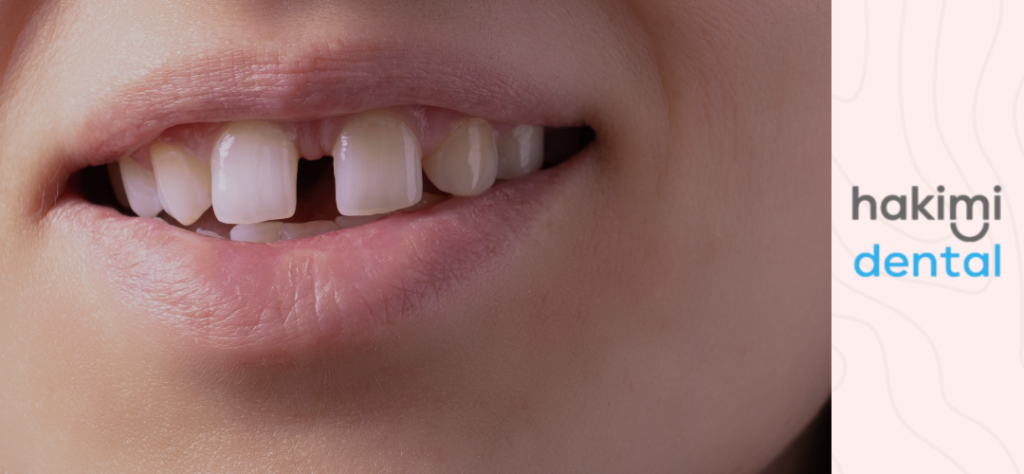When it comes to our smiles, even the smallest detail can make a big difference in how we feel about our appearance and ourselves. A common concern for many is a gap tooth – spaces between teeth that can vary in size but impact self-esteem in significant ways. Whether it’s a slight space noticeable only to you or a more prominent gap that draws attention, the effect on how we perceive our smiles and, by extension, our confidence, can be profound. In this blog, we’re going to explore the myriad of expert solutions available for filling in a tooth gap, ensuring your smile is as seamless and confident as you deserve.
From simple, minimally invasive procedures to more comprehensive orthodontic treatments, we’ll cover the spectrum of options to help you find the best fit for your needs and lifestyle. Along the way, we’ll also dispel common myths and provide practical advice to help you maintain your improved smile for years to come. Let’s embark on this journey together, armed with clear, fresh, and informative guidance, to transform your smile into one that radiates confidence in every conversation, photo, and mirror glance.

Causes and Impacts of Gap Teeth
Before we cover the available options for addressing gap teeth, it’s crucial to gain a comprehensive understanding of what precisely causes these spaces to occur. Gap teeth, medically referred to as diastema, can result from a variety of factors, each playing a different role in the development of spaces between one’s teeth.
Genetics often plays a primary role; if your parents or grandparents had gap teeth, there’s a higher chance you might too, indicating the trait can be inherited. The size and structure of your jawbone compared to the size of your teeth can also contribute to the formation of gaps. Simply put, if your teeth are too small relative to the size of your jawbone, spaces between the teeth are more likely to occur.
Another contributing factor can be gum disease, which affects the health of the gum tissue and the bones that support the teeth. Advanced gum disease can lead to the loosening of teeth, creating gaps as the teeth may shift position due to the weakened support structure.
Childhood habits, such as thumb sucking, prolonged use of a dummy, or tongue thrusting (pushing the tongue against the teeth when swallowing), can exert pressure on the teeth, causing them to move apart and create spaces. These habits, when continued over a long period, can significantly influence the alignment of the teeth and the development of gap teeth.
While for some, gap teeth can serve as a distinctive feature that enhances their smile and overall appearance, making it a charming aspect of their individuality, for others, these gaps might be a source of self-consciousness and discomfort. The perception of gap teeth varies widely among individuals and cultures, with some considering it a sign of beauty or luck, while others might feel it detracts from the aesthetic harmony of their smile. This divergence in perception underscores the importance of personal choice in deciding whether to seek treatment for gap teeth, driven by one’s feelings and how it impacts their self-esteem and confidence.
Expert Solutions for Filling Tooth Gaps
1. Dental Bonding
Composite bonding, also known as dental bonding stands out as a swift and economical method for addressing tooth gaps. This process involves the application of a tooth-coloured resin, which your dentist skillfully moulds and shapes to fill the gap. The resin is then hardened with a special light, bonding it securely to your teeth. The beauty of dental bonding lies in its ability to blend seamlessly with your natural teeth, making the gap virtually undetectable, all achievable within a single dental visit. It’s an excellent choice for those looking for an immediate improvement without the commitment to more invasive procedures.
2. Orthodontic Treatments
For individuals in pursuit of a more comprehensive solution to close tooth gaps, orthodontic treatments present a highly effective route. Options such as traditional braces or modern clear aligners are designed to gradually shift teeth into the desired position, thereby closing the gap. Beyond the aesthetic enhancement, these treatments offer significant oral health benefits by improving the alignment of your bite. This can lead to reduced wear and tear on your teeth over time and can help prevent issues related to misalignment, such as jaw pain and difficulties in cleaning teeth effectively.
3. Veneers
Porcelain veneers represent a durable and visually appealing option for correcting larger gaps between teeth. These thin, custom-made shells are designed to cover the front surface of your teeth, instantly transforming your smile into one that’s smooth and gap-free. The process involves the removal of a small amount of tooth enamel to accommodate the veneer, which is then bonded to the tooth. Veneers are celebrated not only for their aesthetic transformation, but also for their resilience and the relatively long lifespan they offer, making them a popular choice for those looking to invest in a lasting solution.
4. Dental Implants or Bridges
In scenarios where the gap results from one or more missing teeth, dental implants or bridges serve as ideal solutions. Dental implants provide a permanent fix, involving a titanium post that’s surgically implanted into the jawbone to act as a root for a crown that fills the gap. Bridges, on the other hand, use adjacent teeth as anchors to hold a prosthetic tooth in place over the gap. Both options not only aesthetically fill the gap but also restore the full functionality of your bite, allowing for normal eating and speaking. These treatments can significantly improve quality of life, especially for those who have been dealing with the challenges associated with missing teeth.
Maintaining Your Gap-Free Smile
Regardless of the treatment you opt for to address tooth gaps, one universal truth remains paramount: maintaining exemplary oral hygiene is the cornerstone of ensuring the longevity and vibrancy of your gap-free smile. A meticulous oral hygiene regimen, characterised by regular and thorough brushing and flossing, serves as the first line of defence against the accumulation of plaque and tartar, which can lead to tooth decay and gum disease. Brushing twice a day with fluoride toothpaste, complemented by flossing at least once daily, helps to remove food particles and plaque from areas that your toothbrush might not reach.
In addition to your home care routine, scheduling regular visits to your dentist is indispensable. These check-ups, typically recommended every six months, allow for professional cleaning that can remove tartar build-up and polish your teeth to a shine, further enhancing your smile’s aesthetic. Moreover, these appointments provide an opportunity for your dentist to monitor the health of your teeth and gums, the integrity of any dental work, and to catch potential issues early, before they escalate into more significant problems.
It’s also worth noting that the longevity of some dental treatments, particularly dental bonding and veneers, can be directly impacted by habits such as nail-biting, chewing on hard objects, or using your teeth as tools. Being mindful of these actions can extend the life of your dental work and preserve your smile’s appearance.
Finally, embracing a healthy diet that limits sugary snacks and beverages can contribute significantly to oral health. Foods high in vitamins and minerals, such as calcium and phosphorus, can help strengthen tooth enamel and support gum health, further supporting your efforts to maintain a beautiful, gap-free smile.
By committing to these practices, you not only invest in the longevity of your dental treatments but also in the overall health and appearance of your smile, ensuring it remains radiant and strong for years to come.
Conclusion
Gap teeth, whether a source of charm or concern, can be addressed with various professional treatments. From dental bonding to orthodontic solutions, there’s an option suited to every need and budget. Remember, the first step towards a gap-free smile is consulting with your dental professional. They can guide you through the options and help you choose the best solution for your unique smile. Here’s to feeling confident and radiant with every grin!
In crafting this guide, we’ve covered the essential aspects of filling in a tooth gap, ensuring you’re well-informed and ready to take the next step in your dental health journey. A beautiful, seamless smile isn’t just about aesthetics; it’s about feeling good in your skin and radiating confidence in every aspect of your life.
FAQs
Not necessarily. Many people embrace their gap teeth as part of their unique look. However, if you’re self-conscious about it or if it affects your oral health, seeking treatment is a good idea.
Dental bonding can last from 3 to 10 years, depending on oral habits and hygiene.
No, the process of getting veneers is not painful. Local anaesthesia is used to ensure comfort, and most patients report minimal discomfort.
Yes, in some cases, gap teeth can lead to issues like food trapping, which may increase the risk of gum disease and tooth decay.
Costs vary widely depending on the treatment option and the extent of the work needed. It’s best to consult with your dentist for a personalised treatment plan.
